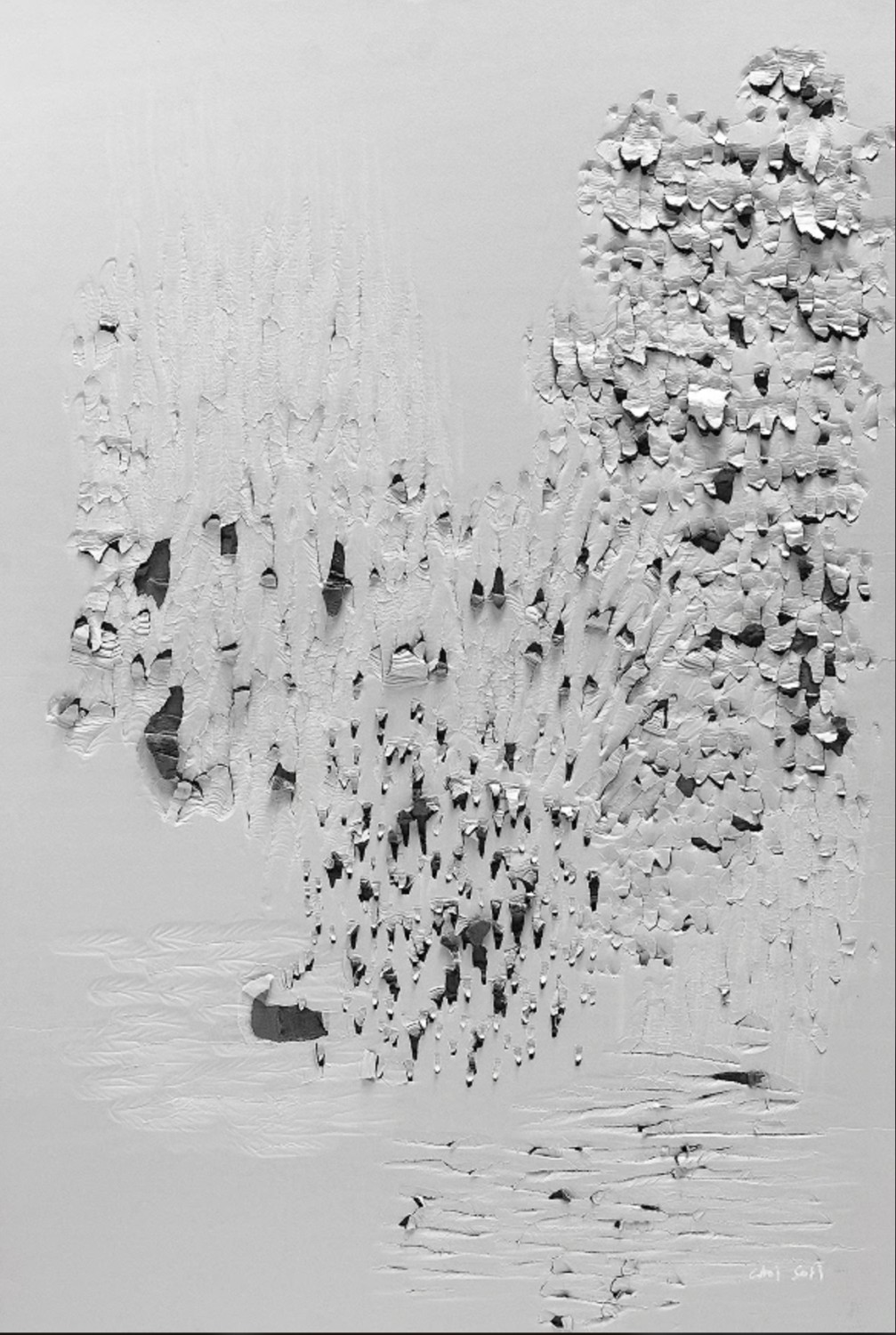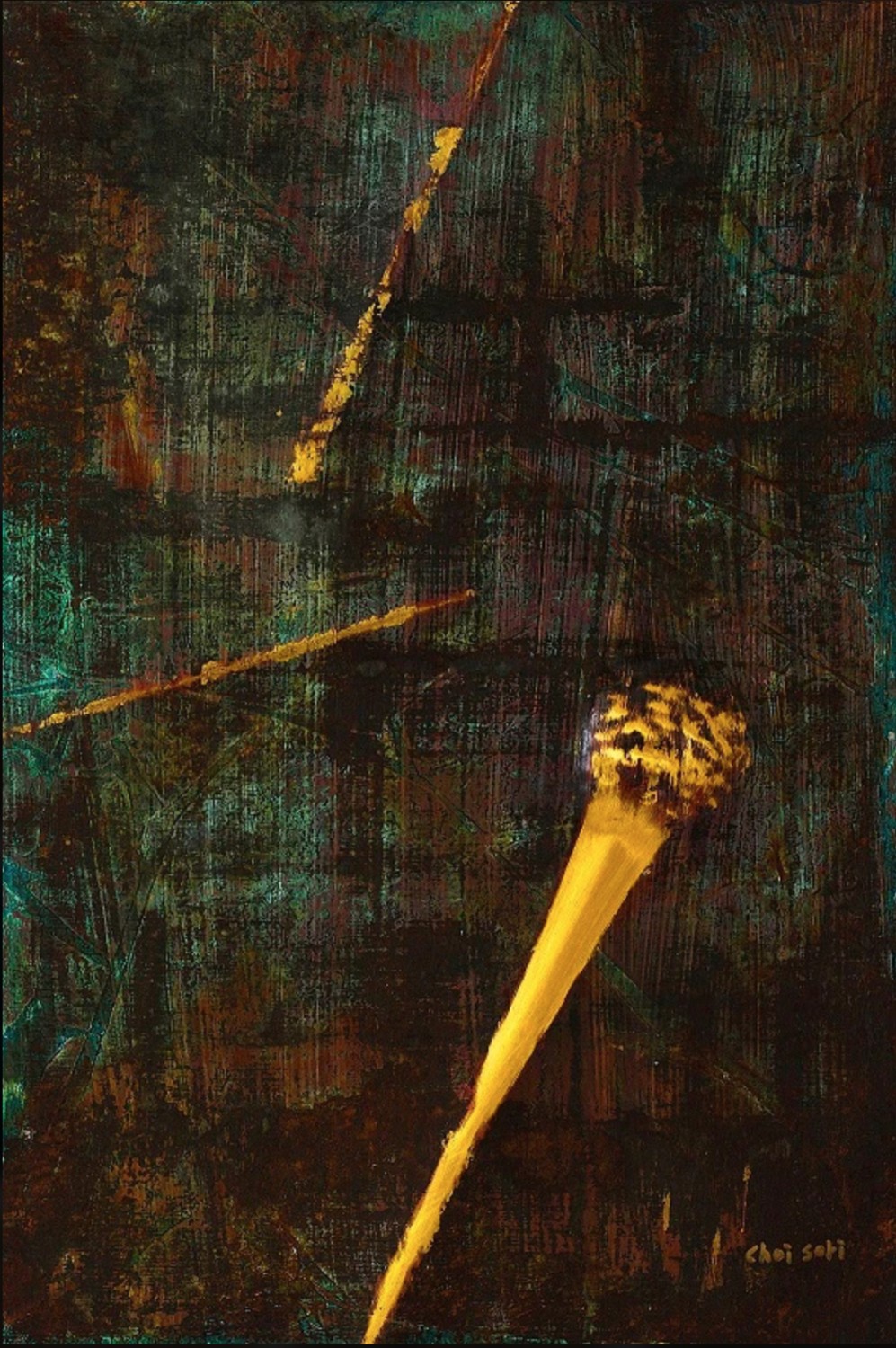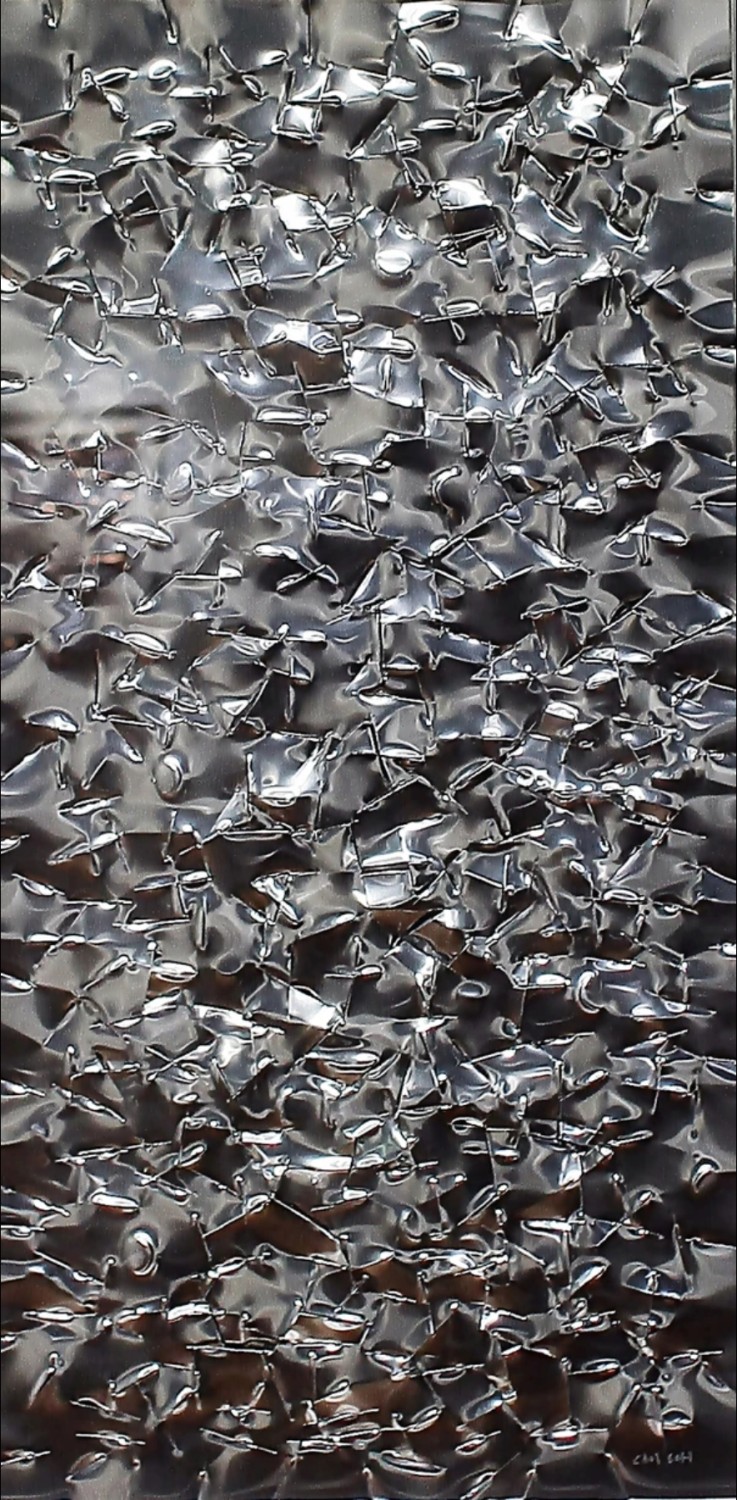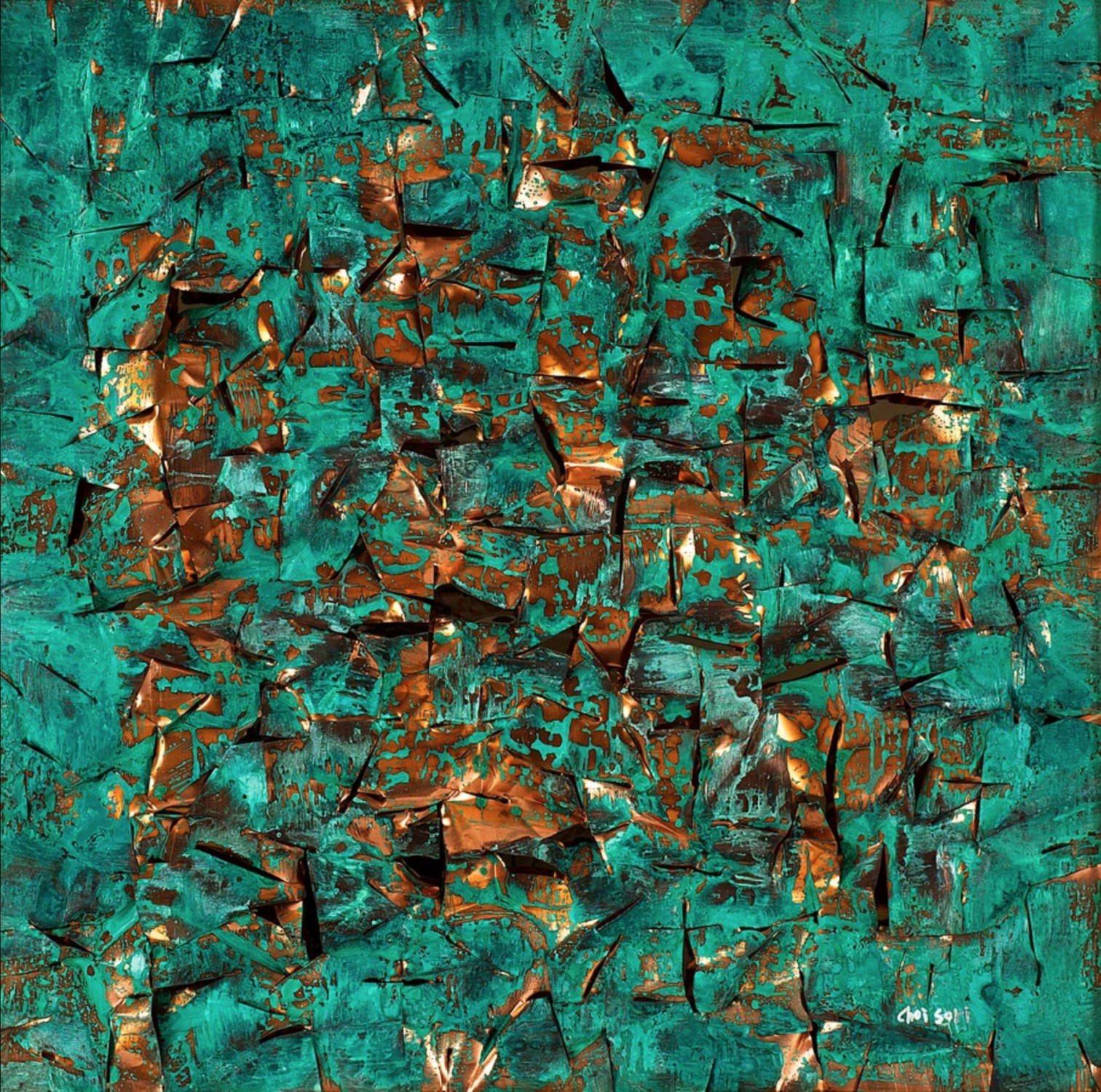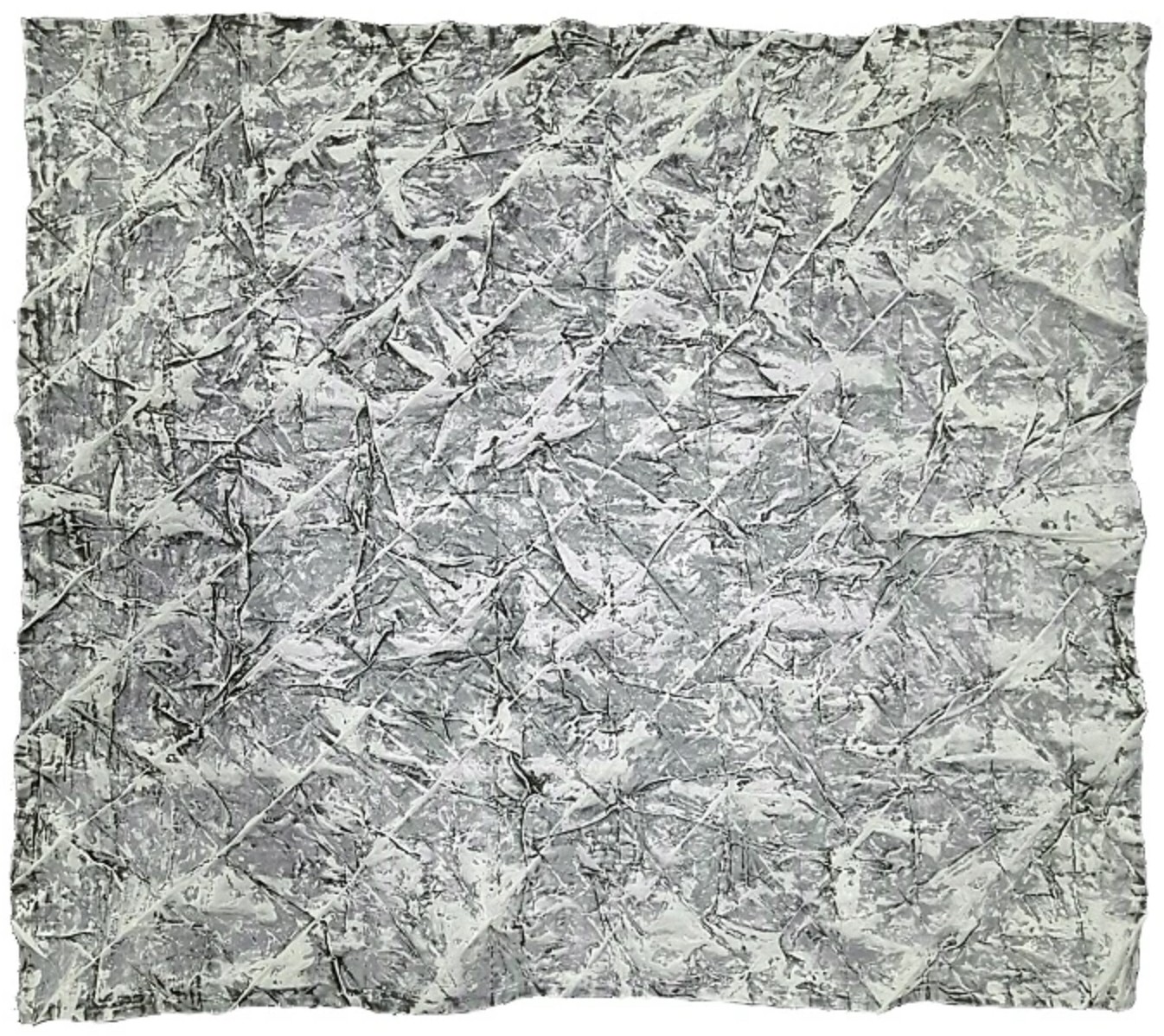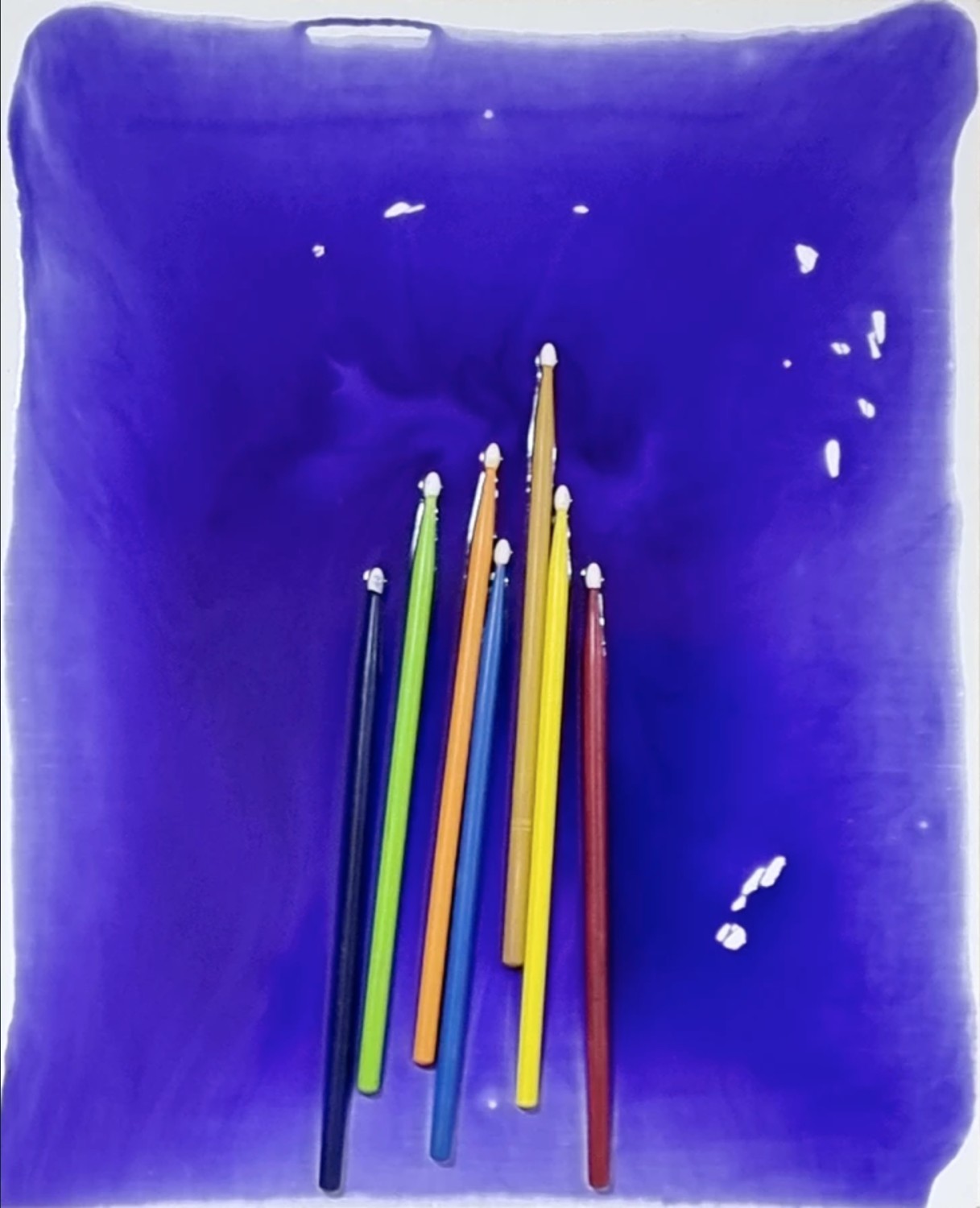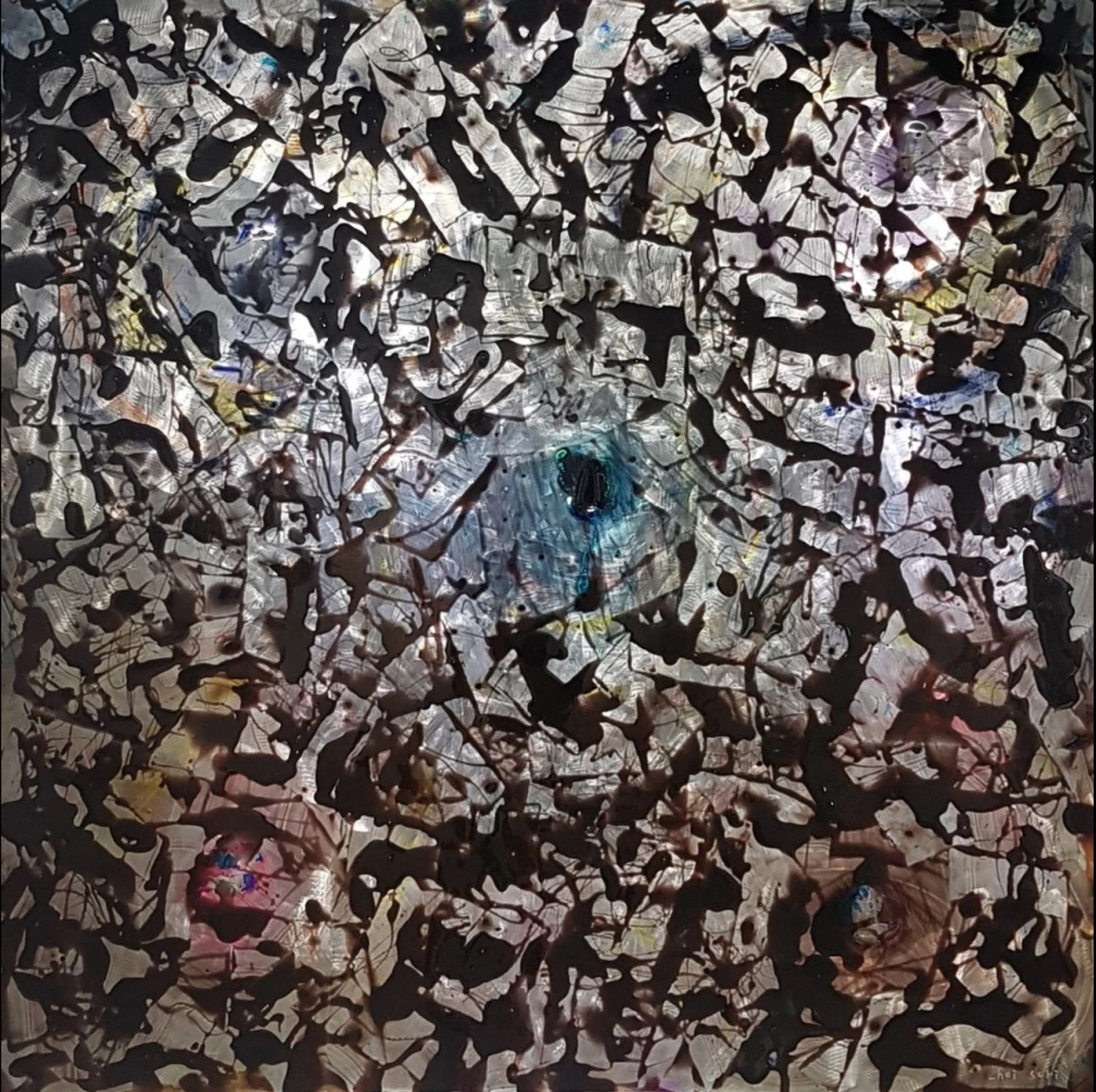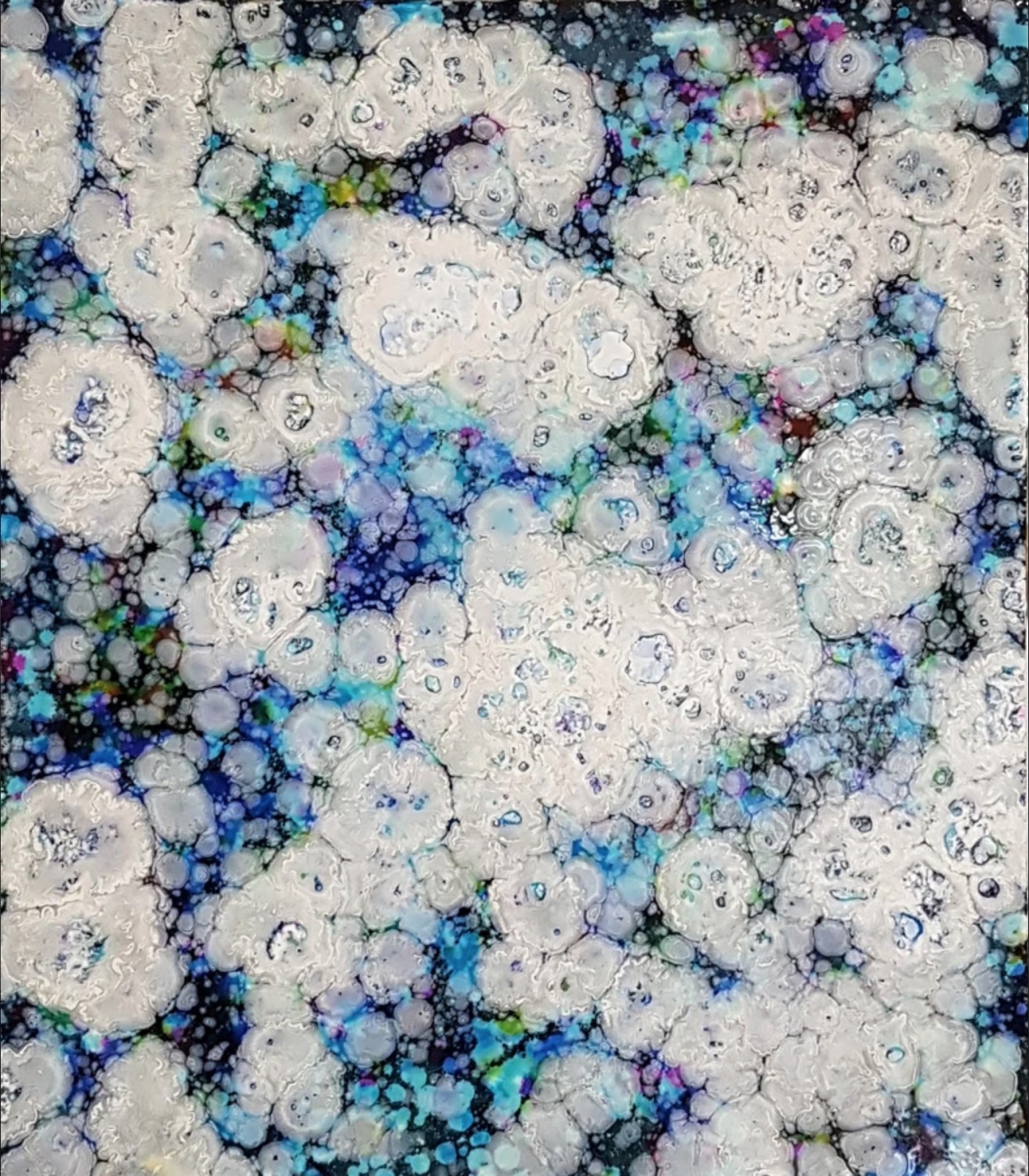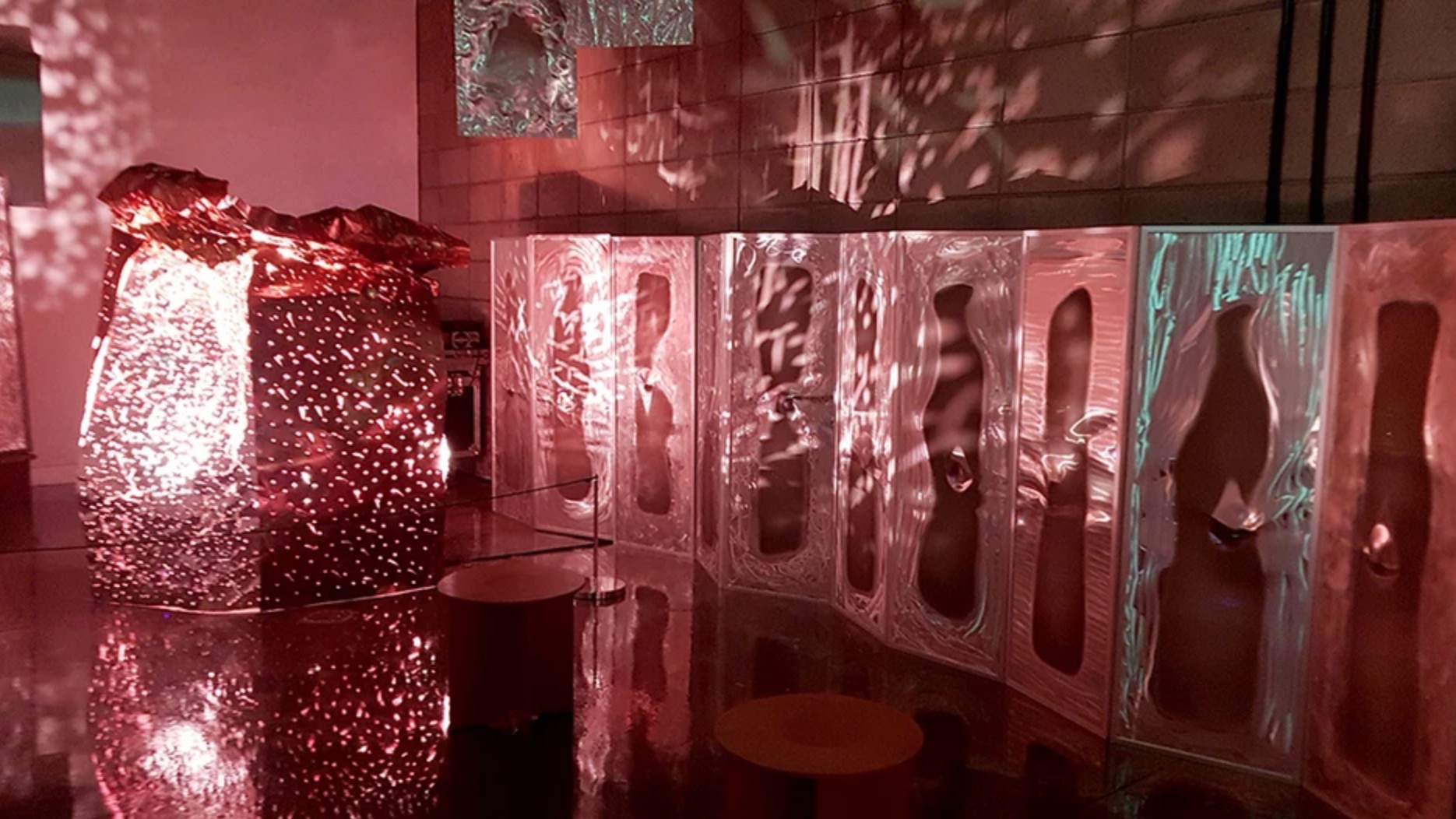The Percussive Art of Sori Choi
By Laura Heyrman
South Korean visual artist Sori Choi began his creative career as a percussionist. For a time he was a member of the Korean metal band Baekdoosan, but left to pursue a career as a solo artist. As a musician, Choi is known for his experimental percussion performances into which he incorporates lighting, water, fire, and even the creation of visual artworks. Over a period of 30 years, he has released 10 albums of his percussion compositions and performed worldwide in over 200 cities. You can see videos of Choi’s dynamic performances here: youtu.be/gcFcYh0FJ9Y and here: youtu.be/hUg0GgDU_6U. (Please note that clicking a link does not open a new window; click the "go back" arrow to return to the Viewing Room.)
As his performance career progressed, the artist recognized the potential of his percussion tools to create visual art. Choi has used various tools, including drumsticks, mallets, hammers, and even electric grinders to alter the surfaces of his creations. Visible Sound (Kalpa 劫겁) made in 2022 on a sheet of brass and included in the slide show below, is an example of extensive use of the electric grinder. Paint is frequently used to add color to the works, including many in the slide show. A good example of Choi's combining of percussed marks with painted elements is Visible Sound (Flower Road 5), a mixed media on canvas work from 2020. When the artist moved to the mountains near the southern edge of the Korean peninsula, he began to leave pieces of metal and canvas in the landscape, to allow natural forces to affect them. Choi then uses these objects as a base for his own interactions with his supports. He views such works as a means of communication between nature and humanity.
“Playing and dancing, singing, writing, painting. This whole act is the same thing to me. The one is sometimes completed with pictures, sometimes with music.” – Sori Choi
Choi’s percussion performances have been described as “mysterious, unfamiliar, and even . . . deeply moving.” As his visual art is an extension of his immersion in both natural and man-made sound, the artist usually uses “Visible Sound” as a title or part of one. It’s hardly surprising that many of Choi’s works are made from sheets of metal – aluminum, brass, and copper, as these material create sound when struck. The artist has also interacted with other materials, including wire netting, paper, and canvas. Examples of all of these are included in the Viewing Room. No matter the support he chooses, Choi explores the sonic possibilities inherent in his materials. The finished work is a record of the artist’s actions, a concept which is found in the mid-20th century artistic movements Gutai, Abstract Expressionism, and Lyrical Abstraction. This characteristic is especially noticeable in Visible Sound (Gray Land), 2010.
“Each time I start, I release my current (spiritual) self and meet another version of my spiritual being.” – Sori Choi
Choi describes himself as entering a state of samādhi (a Buddhist concept of intense meditative awareness) in the presence of nature and sound, and in the act of creating both music and visual art. This spiritual approach, in which the specific acts of making are instinctive or not consciously produced, has similarities to Zen Buddhist painting techniques used in China and Japan beginning in the 12th century and in 20th century Russian artist Wassily Kandinsky’s Improvisations. The Surrealist technique of automatic writing is also related. However, Choi is unique in his regular use of percussion methods in creating his works. This short video shows the artist at work: youtu.be/mSCwHX8mMdE.
The artist’s belief that his visual art will communicate the sounds that created it depends on the concept of synesthesia. A perceptual phenomenon in which a stimulus to one sense is experienced by a different sense, synesthesia was first medically documented in 1812. Any sense or perceptual pathway can be engaged; which ones are activated vary among individuals. As in his percussion performances, Choi's exhibitions often incorporate sound and light creating spectacular reflections and color interactions, as in the installation view included in the slide show. Whether Choi’s art provokes a synesthetic experiences in a viewer, the artist's materials, textures, and colors provides plenty of visual stimulation.
“All objects and energies in this world have their own sounds. I want to be a messenger to send such sounds to all of you.” – Sori Choi
Please share your comments and questions on Substack, at this address: irequireart.substack.com/p/viewing-room-22/comments.
Longer captions may not be fully visible on smaller screens. We apologize for the inconvenience.
If the caption obscures part of the artwork, click on the image to turn off the caption.

